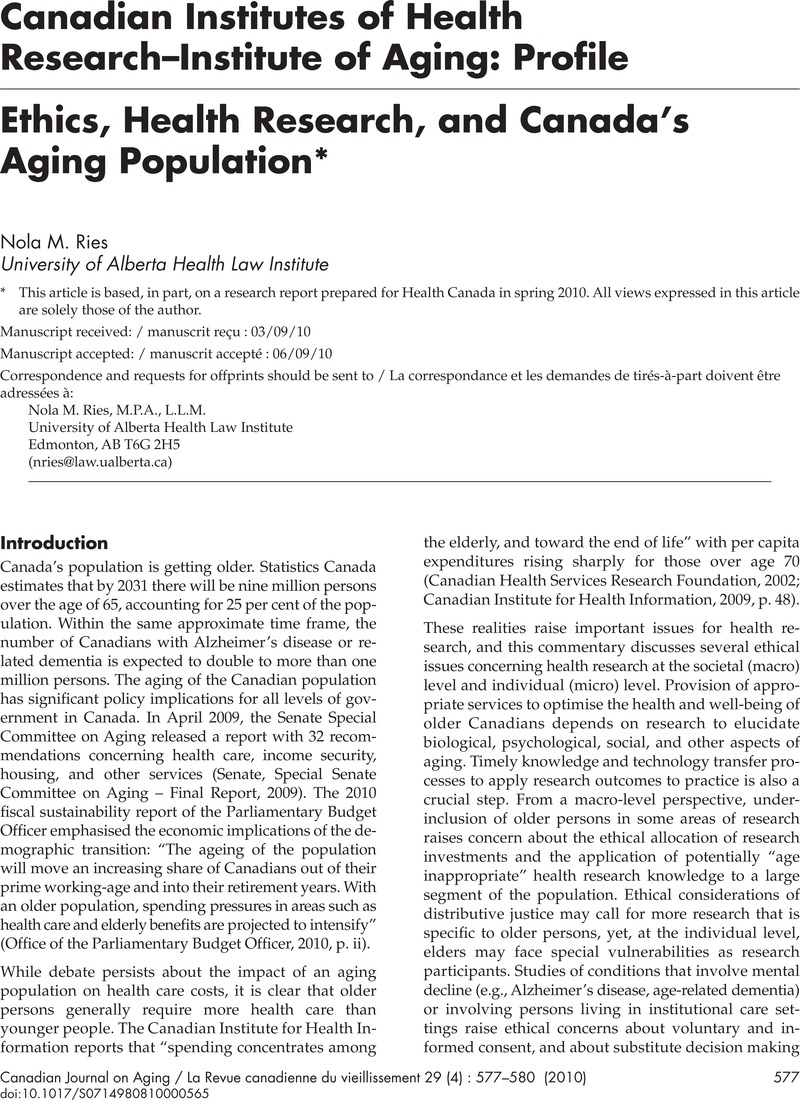Crossref Citations
This article has been cited by the following publications. This list is generated based on data provided by Crossref.
Nathan, Santhosh
Goodarzi, Zahra
Jette, Nathalie
Gallagher, Clare
and
Holroyd-Leduc, Jayna
2017.
Anticoagulant and antiplatelet use in seniors with chronic subdural hematoma.
Neurology,
Vol. 88,
Issue. 20,
p.
1889.
Mukherjee, Amrita
Livinski, Alicia A.
Millum, Joseph
Chamut, Steffany
Boroumand, Shahdokht
Iafolla, Timothy J.
Adesanya, Margo R.
and
Dye, Bruce A.
2017.
Informed consent in dental care and research for the older adult population.
The Journal of the American Dental Association,
Vol. 148,
Issue. 4,
p.
211.
Koehn, Sharon
Baumbusch, Jennifer
Reid, R. Colin
and
Li, Neville (Ka Ming)
2018.
‘It’s Like Chicken Talking to Ducks’ and Other Challenges to Families of Chinese Immigrant Older Adults in Long-Term Residential Care.
Journal of Family Nursing,
Vol. 24,
Issue. 2,
p.
156.
Yu, Lingling
Li, Xiaoling
Zhang, Pengjun
and
Zhang, Guojun
2020.
Ethical guidance for geriatric clinical research in China.
AGING MEDICINE,
Vol. 3,
Issue. 4,
p.
218.
Allison, Clouse
Korey, Loi
and
John Z, Srbely
2021.
A novel computational technique for the quantification of temporal summation in healthy individuals.
Musculoskeletal Science and Practice,
Vol. 54,
Issue. ,
p.
102400.
Elliott, Jacobi
Stolee, Paul
Mairs, Katie
Kothari, Anita
and
Conklin, James
2023.
A Community of Practice on Environmental Design for Long-Term Care Residents with Dementia.
Canadian Journal on Aging / La Revue canadienne du vieillissement,
Vol. 42,
Issue. 3,
p.
404.
Carrasco Diaz , Beatriz
and
Solis Albanese , Elizabeth
2023.
Ethical conditions for research with the elderly: a narrative review [Version 1; Peer Review - In Progress].
Salud, Ciencia y Tecnología,
Vol. 3,
Issue. ,
p.
219.



